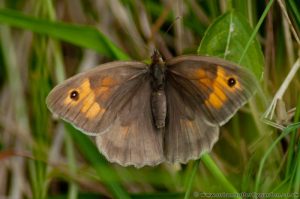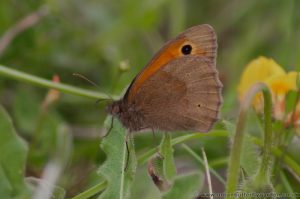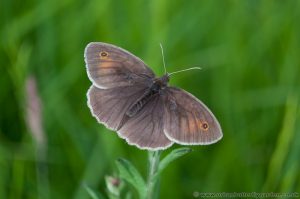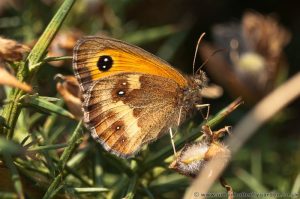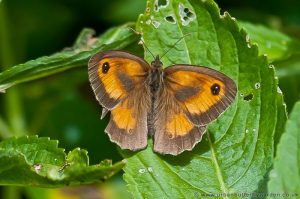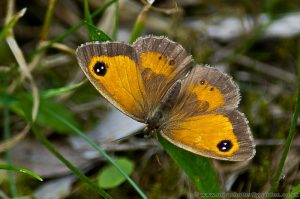The Meadow Brown butterfly is probably one of the most common and widespread of all butterflies, seen throughout the UK. On the wing from June – September, it can often be found in many different types of grassy habitat such as, open woodland rides, roadside verges, meadows and even gardens.
This butterflies upper-wings are dark brown with a black eye spot and a band or light orange patch on the fore-wings, these markings are far less prominent on the male which also has a slightly smaller eye-spot.
Quick Info
- Name: Meadow Brown (Maniola-jurtina)
- Family Group: Nymphalidae, Browns.
- When: June to September
- Habitat: All kinds of rough grassy places, Meadows, woodland rides, Roadsides Verges, gardens
- Wingspan: around 50mm
- Adult butterflies feed on: Thistles, Bramble flowers, Knapweed, Common Ragwort, Wild Marjoram, Lavender, Coneflowers (Rudbeckia), Buddleia.
- Caterpillars feed on: Cock’s foot and other various grasses.
- Photographed – 13th June 2010 – 27th June 2012
- Location – South Lincolnshire
The underside of the fore-wing is mainly orange with a black eye-spot while the hind-wing is mottled brown.
During cool weather or as the temperature falls towards sunset, the Meadow Brown will climb down and rest amongst the lower stems of tall grasses.
If disturbed before dusk they will often take flight and may flutter some distance before finding a suitable place to rest again.

